Last Updated on September 11, 2024
During our webinar with career teacher, consultant, and author Tan K. Huynh, he led us through his approach to teaching multilinguals using podcasts and video. His goal is to use comprehensible input, as defined by linguist and education researcher Dr. Stephen Krashen.
“The focus when you’re working with multilingual students is comprehensible input,” says Huynh, “If what we’re teaching to students isn’t comprehensible, there is no output.”
Comprehensible input is language content that students should be able to understand the gist of without necessarily understanding each and every word. By using the visual cues, multimedia, and listening organizers built into Listenwise’s ELD lessons, you can make complex content accessible for all your English learners.
But, as Tan K. Huynh says, the goal is not to make the content easier.
“When you work with multilinguals, often things get ‘dumbed down’ for them. We’re going to keep the mountain the same height, but we’re going to give them multiple paths to get there — we’re going to add different tools to their backpack so they can climb that summit. That’s what Listenwise does — it makes the content accessible. If we ever make things easier for kids, that’s a flag for equity.”
Here are 8 strategies for teaching multilinguals using podcasts and video in a way that make input comprehensible without sacrificing productive challenge.
As of August 2024, Listenwise has a new product designed for newcomers and emergent multilinguals in grades 2-12. Lingolift helps students develop English language proficiency across all four language domains: listening, speaking, reading, and writing. Take a product tour to learn more about Lingolift.
Comprehensible Input With Videos
Using our “Chinese Immigrants and the Transcontinental Railroad” (ELD) lesson
- Introduce new vocabulary by asking students to create simple drawings and add labels (“sketch notes”).
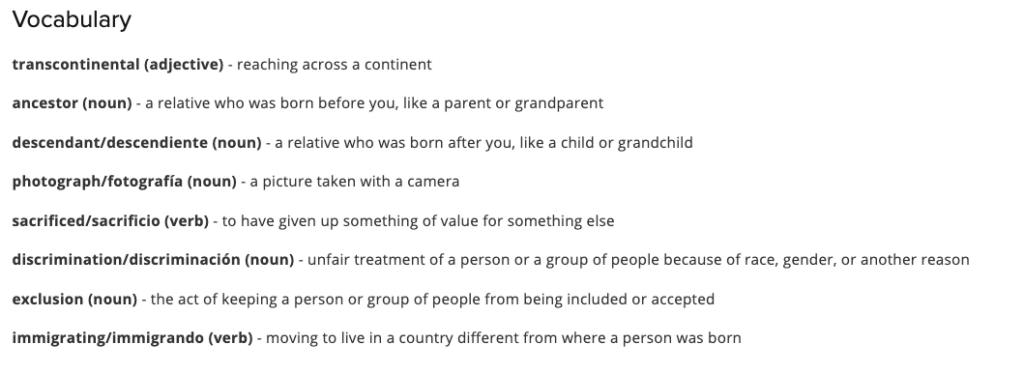
Each of our ELD lessons come with assignment resources that include vocabulary lists. These lists also include Spanish cognates when applicable.
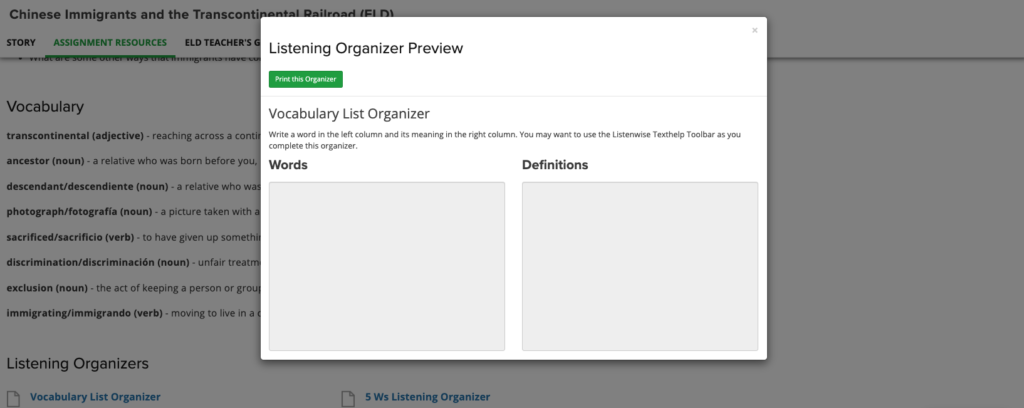
As you show students the video, select moments where you can pause for emphasis. Instruct students to get out a piece of paper and something to draw with. Ask them to follow your instructions as you explain and reference a vocabulary word that they see in the video. They should then draw and label that word on their paper. Give them about 15 seconds for their drawing before moving on to a new word.
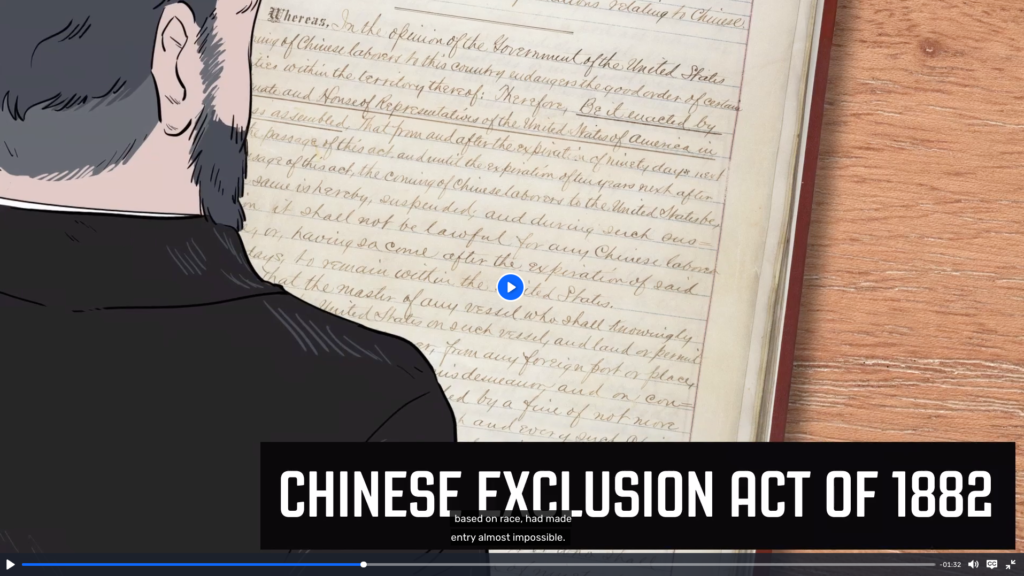
- Pause videos at specific, intentional points to chunk the information.
In addition to pausing to emphasize key vocabulary words, use pauses to recap what has just been shown or explained in the video. You can ask students questions to check for understanding of a critical segment.
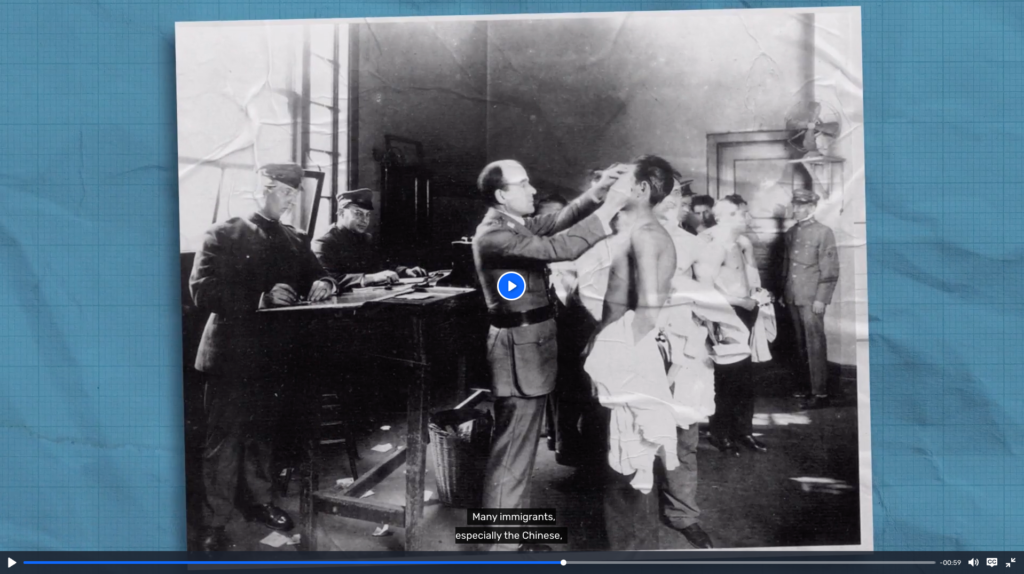
Intentionally chunking information in such a way that English learners will encounter key vocabulary multiple times helps ensure that they have enough opportunities to process what they are learning. The goal is active listening.
“While you’re watching a Listenwise video, you can have students actively interact instead of just passively watching.” - Ask students to work together to summarize what they learned from the video.
There are several ways you can prompt students to work collaboratively to synthesize what they learned from the video. The key is to focus on both the content and language objectives. One method is to ask students to work together to answer questions about key elements of the video’s narrative, such as:
- What is the subject of the story? Who or what is the story about?
- What is the most important thing that the story says about the subject?
- What is the gist of the story (subject + what the story says about it)?
Another step might be to ask pairs of students to share their gist statements, and work to get consensus on a final version that works well as a statement of the main idea of the story. Ask students to use the vocabulary and the language forms and functions that are the focus of the language objective where possible.
A major benefit of this approach is that it is social. The first part of the activity is teacher-led, but prompting students to collaborate gets them talking to each other — a goal in any multilingual classroom.
Pro tip: Measure comprehension with our built-in quizzes. With autoscored results you can assess whether your students understood the lesson and identify key areas where they can improve!
Comprehensible Input With Podcasts
Using our “Harriet Tubman and the Underground Railroad” (ELD) lesson
- Before listening: Activate students’ prior knowledge to connect them to key themes in the podcast.
Not only is activating prior knowledge key to ensuring comprehensible input, it’s also a great way to get your English learners to connect to one another. You also get to learn a little about your students! “The more you get students to stop and connect to something in the text before they get to the text, video, or podcast— the more engagement you’ll have,” Hyunh says, “You’re priming the pump for them to understand.”In the example below, Huynh poses a broad question to his students on the subject of helping others. Students will then share examples of times when they helped someone or when they have seen someone else helping others.

- Before listening: Support comprehension with the podcast transcript and visuals
Huynh recommends taking the first few sentences from the podcast transcript and putting them on a slide next to a graphic for context. Note: All of our ELD lessons include images you can use for this activity.
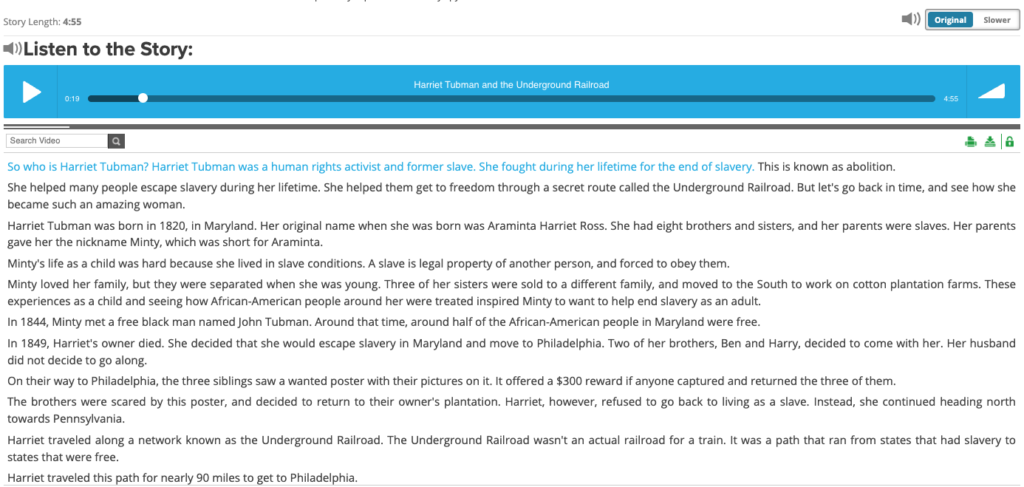

Providing students with a visual is a great way to employ metacognitive strategies to help students make meaning from text. For example, the map above helps students visualize the expanse of the Underground Railroad and the movement that took place. Teach students to use Google Images to look up words they don’t understand that begin with capital letters to find images that can help them decode the meaning.“Metacognitive strategies are so important to multilingual students because we do not want them to become dependent on teachers. We want them to be dependent upon strategies.”While the podcast is playing, students can follow along with the interactive transcript, which highlights words as they are spoken. This can help multilinguals using podcasts and video see the correspondence between spoken and written English.
- Pause the podcast at specific, intentional points to recap
With English learners, everything needs to be intentional. Rather than listening through to the end of the podcast on the first listen, take a moment to pause and recap what was discussed in different sections of the podcast. Then, place emphasis on key themes and vocabulary that you will plan to revisit later.
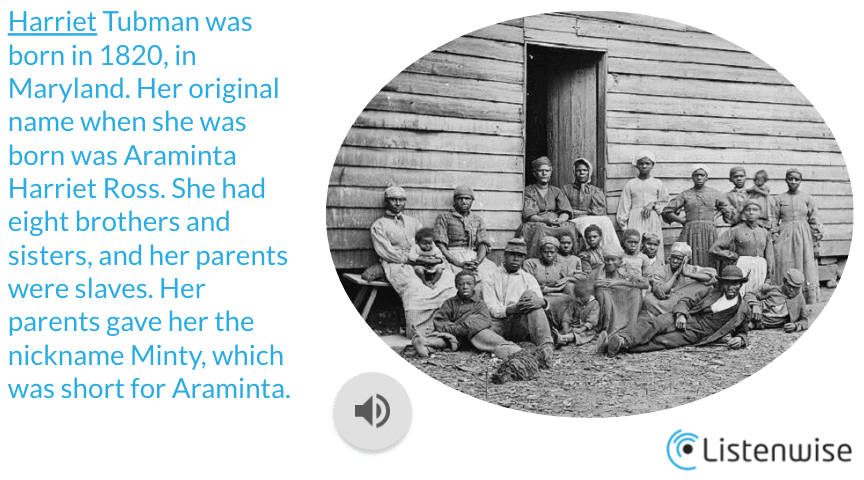
- Check for understanding by asking students to answer questions using sentence starters. The answer should incorporate key vocabulary words that have been emphasized during the lesson so far.
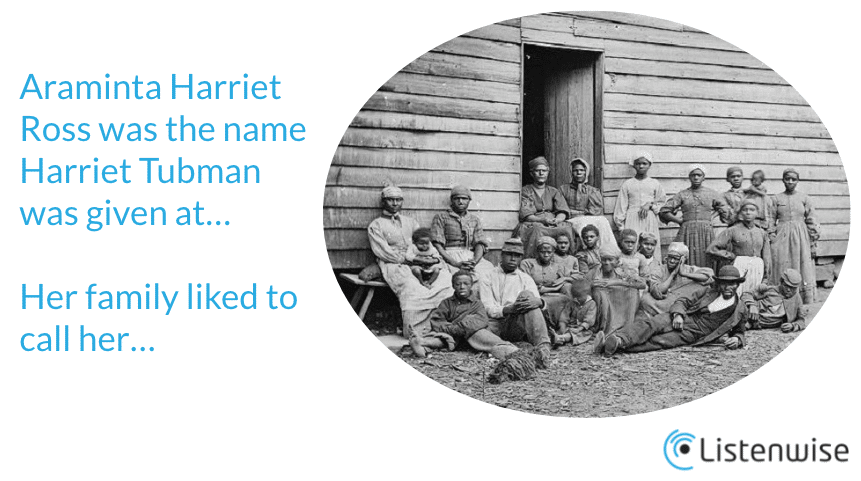
In the above example, Huynh focuses on getting students to understand that Harriet Tubman, Araminta Harriet Ross, and Minty are all the same person. By pausing, reviewing, and highlighting this information throughout the initial listen, students will be able to answer comprehension checks like this with their newly acquired background knowledge.Coming up with comprehension questions and sentence starters for multilinguals using podcasts and video is easy with Listenwise. Each Listenwise ELD lesson includes listening comprehension questions to help teachers scaffold learning and ensure students understand key concepts.

